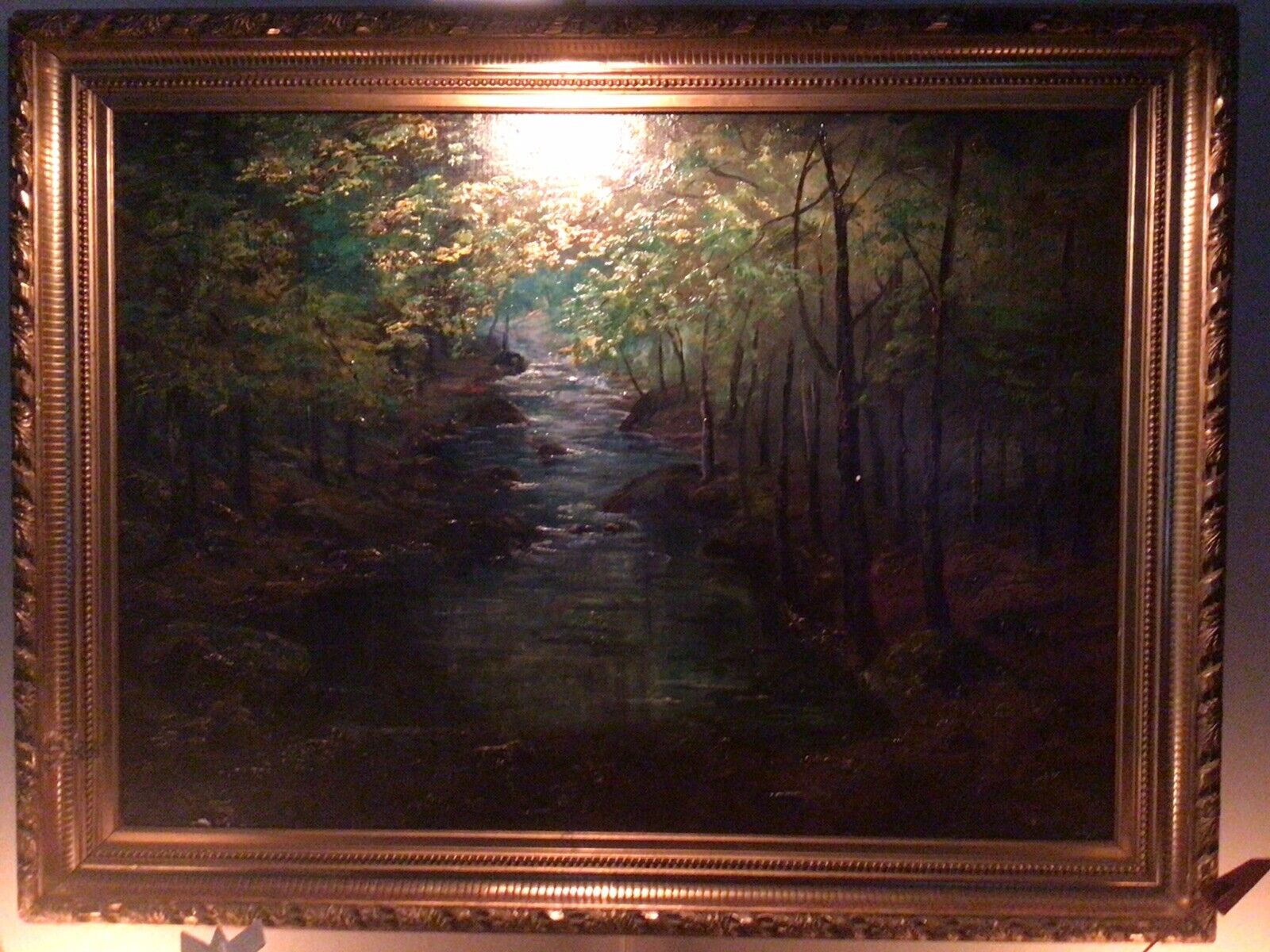Fake artworks supposedly painted by Impressionist masters Claude Monet and Pierre-Auguste Renoir are being sold on eBay, according to an expert art authenticator. Carina Popovici, CEO of Art Recognition, claims to have identified as many as 40 forgeries on the online auction platform using her company’s advanced A.I. software, and suggests there are many more out there.
Unlike traditional authentication that is undertaken by a human expert in the presence of the artwork, Art Recognition uses machine learning and vast collections of digital images to make judgements. After downloading a variety of pictures, Popovici discovered that a supposed Claude Monet, titled Forest With a Stream and with a price of $599,000, was almost certainly counterfeit.
Nevertheless, the seller stated in the listing that, “I fully guarantee that the painting is an original 1867 oil on canvas signed and dated by Monet. The painting is not in perfect condition, and I do not have any provenance beyond me having it for over 20 years.”
A piece described as a study by Renoir and listed by the seller for $165,000 was also identified by A.I. as a fake. Both listings have since been removed from the online marketplace.
Popovici told the Guardian that she had repeatedly contacted eBay offices in the U.K., Germany and the U.S. since December 2023 to alert the company to these issues, but she is still awaiting a response.
“They can’t just pretend that they don’t see what is happening, because there is so much of this,” she said. “There are clear indications that there is a major problem there.”
When contacted by the newspaper, an eBay spokesperson stated that, “The sale of counterfeit items is strictly prohibited on eBay, and we are committed to ensuring that goods sold on our platform are authentic.”
While the company attests to using “multiple layers of A.I. technology, professionally trained eBay investigators, and buyer protection programs,” leading to proactively blocking millions of listings a year, such efforts are arguably more attuned to counterfeits of major fashion brands and electronics, rather than individual works of art.
The issue of attribution, as well as outright forgery, is hardly new in the art world. Wolfgang Beltracci famously fooled multiple experts with hundreds of paintings attributed to the likes of Fernand Léger, Max Ernst and Heinrich Campendonk, before receiving a six-year prison sentence.
More recently, Catalan police broke up a crime ring accused of selling multiple Banksy fakes. The question of whether an established work of art is truly by a master’s hand can also cause outright scandal, as was the case with the disputed Leonardo, known as the Salvator Mundi.
Art Recognition is one of several A.I. companies leading the way when it comes to verifying works of art, often collaborating with industry experts to offer its services. However, such results are still far from conclusive, particularly as many artists go one to develop their style and technique.
In a recent case, an A.I. model developed by Hassan Ugail of the University of Bradford, which uses facial recognition, “undoubtedly” determined that a work known as the de Brécy Tondo was by Raphael. However, Art Recognition attested that it was 85 percent probable that the work was by a different hand.
“Now, more than ever, it is imperative to stress the significance of adhering to rigorous scientific standards. Otherwise, the entire field of A.I. could face criticism, and we would all suffer the consequences,” said Popovici.
Follow Artnet News on Facebook:
Want to stay ahead of the art world? Subscribe to our newsletter to get the breaking news, eye-opening interviews, and incisive critical takes that drive the conversation forward.



